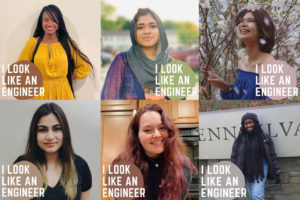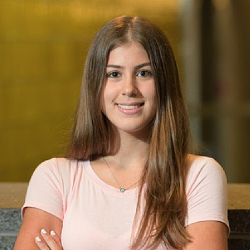
Penn Engineering’s Advancing Women in Engineering (AWE) program, dedicated to recruiting, retaining and promoting all female-identified students in the School, participated in the “I Look Like an Engineer” social media movement for the third year in a row. The movement, aimed at promoting diversity around underrepresented groups like women and people of color, was started by software developer Isis Anchalee in 2015.

Francesca Cimino, member of AWE and a rising senior in the Department of Bioengineering, has always been passionate about changing the stereotypes and breaking down the barriers that prevent engineers of diverse backgrounds from thriving. She wanted to continue AWE’s tradition of participating in the movement to showcase the diversity already present within the field and prove that there is no single characteristic that defines an engineer.
At the conclusion of the campaign, Cimino responded to questions about the importance of diversity and what a more equal world in engineering looks like.
Why did you decide to get involved with AWE?
I applied to be a part of AWE’s Student Advisory Board during the spring semester of my freshman year. Being on the board was very enticing to me because I was looking to make connections with more women engineers at the time. I wanted to create my own community of women engineers while also wanting to help foster a community for all. AWE’s message and goals really resonated with me as well, so I knew it would be a perfect fit.
How important has mentorship from other female engineers been for you?
Being able to interact and learn from women who have experience in the industries I am most interested in has been very valuable to me. It has been inspiring to learn about their stories and the fact that I can relate to many of them has definitely allowed me to become more confident as I get closer to starting my career. Mentorship is something AWE really values and the board has worked to develop a mentoring network for women engineers, which I really admire.
Read the full Q&A in Penn Engineering Today.

